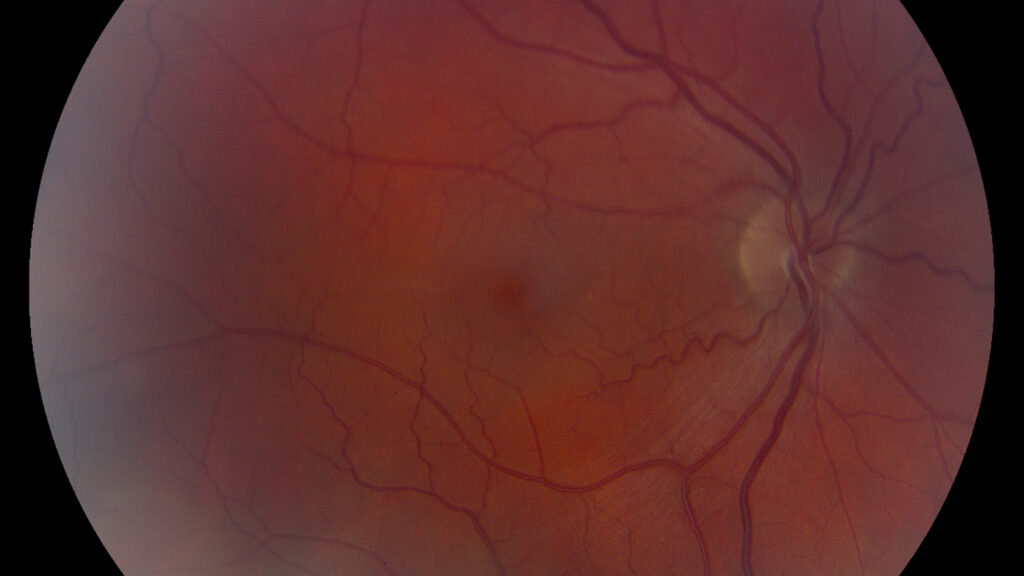A new observational study on Wednesday reported for the first time a potential link between Novo Nordisk’s GLP-1 drugs Ozempic and Wegovy and an eye condition that can cause vision loss.
After hearing anecdotes of patients on the diabetes and obesity drugs experiencing nonarteritic anterior ischemic optic neuropathy, or NAION, researchers at Massachusetts Eye and Ear analyzed data from a registry of patients at their institution to see if there was a broad trend.
advertisement
Among 710 patients with type 2 diabetes, there were 17 cases of NAION in patients prescribed semaglutide (the scientific name of both drugs). This translated to a cumulative rate of 8.9% over three years. That compares with six cases in patients prescribed non-GLP-1 diabetes drugs, calculated as a cumulative rate of 1.8%. Through statistical analyses, the researchers estimate that there was a 4.28 times greater risk of developing the condition in patients prescribed semaglutide, according to the study, published in JAMA Ophthalmology.
Studying 979 patients who had overweight or obesity, researchers found 20 cases of NAION in people prescribed semaglutide, calculated as a cumulative rate of 6.7%. In comparison, there were three cases in people prescribed non-GLP-1 obesity drugs, calculated as a cumulative rate of 0.8%. The researchers estimate that there was a 7.64 times greater risk of developing the condition in patients prescribed semaglutide.
In both the diabetes and obesity cohorts that got semaglutide, the researchers found that NAION cases occurred most frequently in the first year after the medications were prescribed.
advertisement
NAION, sometimes referred to as an “eye stroke,” occurs from a lack of sufficient blood flow to the optic nerve. It typically causes sudden vision loss and, in severe cases, can lead to blindness. There are currently no proven treatments for the condition.
NAION was not reported as an adverse event in trials studying semaglutide. As drugs go on the market and many more people take them, it’s common for doctors to find new rare side effects that weren’t seen in the controlled studies.
The authors stress, though, that this observational study does not show that the drugs cause higher rates of NAION — just that there is a potential association. The study also focused only on semaglutide, and the findings can’t be immediately generalized to other GLP-1 drugs. The researchers still believed it’s important to report the findings to spur further analysis and to make doctors and patients aware.
“This study shows an association that we didn’t know about before, and what it should do is give people added information to make a good, well-informed decision about them taking the medicine,” said Joseph Rizzo, senior author on the study and a neuro-ophthalmologist at Mass Eye and Ear. “It doesn’t mean they shouldn’t take it. People are going to have a different sense of risk about whether they want to take it or not.”
In a statement, Novo said that “patient safety is a top priority” and that it takes “all reports about adverse events from use of our medicines very seriously.” NAION is not an adverse event listed on the approved labels, and the new study was not designed to establish a causal relationship, the company said.
“Semaglutide has been studied in large real world evidence studies and robust clinical development programs,” Novo added. “The totality of data provides reassurance of the safety profile of semaglutide.”
There were several limitations to the study. While the researchers manually reviewed each case of NAION, they did not report how severe the cases of NAION were and how much vision people lost. Rizzo said a much larger study would be needed to power that kind of analysis.
Additionally, while the researchers confirmed that the prescribed doses of semaglutide were dispensed, they could not track whether patients actually took the medications and adhered to them.
There may also have been confounding variables. Type 2 diabetes and high blood pressure are risk factors for NAION. It’s possible that patients with more severe diabetes or high blood pressure were more likely to be prescribed semaglutide, as it’s a highly effective drug, and that may have played into the higher rates of NAION in those cohorts.
Susan Mollan, a consultant neuro-opthalmologist at University Hospitals Birmingham in the U.K., who wasn’t involved in the study, said the findings are somewhat surprising since GLP-1 drugs have been found in early studies to reduce inflammation and protect nerves.
She said it’s important in future research to determine whether higher rates of NAION may be linked to direct effects of the drugs or to the biological changes in people taking the drugs.
For example, researchers have seen in trials that people taking semaglutide had higher rates of a different eye condition called diabetic retinopathy. Although study of the condition is ongoing, researchers believe it may be caused by a rapid decrease in people’s blood sugar levels. Mollan said it’s possible that the normalization of people’s metabolic systems, rather than the drugs itself, may help explain the NAION cases.
Overall, though, Mollan said the new study is “a very important paper.”
“When you first get these kinds of signals, we need to apply caution to what we’re hearing, but also we need to protect our patients,” she added. “I’d want eye doctors, endocrinology doctors, and physicians that prescribe the drug to be aware that this has been reported and await further data of a population study to help us talk about the risk.”

